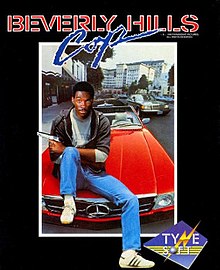
Rick Dangerous is a platform game developed by Core Design for the Acorn Archimedes, Amiga, Atari ST, Amstrad CPC, ZX Spectrum, Commodore 64, and MS-DOS. The game was released in 1989 and published by MicroProse on the Firebird Software label in the UK, and on the MicroPlay label in America. It was also published in Spain by Erbe Software. Later, it was released with two other games, Stunt Car Racer and MicroProse Soccer, on the Commodore 64 Powerplay 64 cartridge. The game was followed by a sequel, Rick Dangerous 2, in 1990. Loosely based on the Indiana Jones film franchise, the game received mixed reviews from critics.

Stunt Car Racer is a racing video game developed by Geoff Crammond. It was published in 1989 by MicroProse, under their MicroStyle and MicroPlay labels in the United Kingdom and in the United States, respectively. The game pits two racers on an elevated track on which they race in a head-to-head competition, with ramps they must correctly drive off as the main obstacle.

Barbarian: The Ultimate Warrior is a 1987 video game developed and published by Palace Software for the Amstrad CPC, Commodore 64, and ZX Spectrum. The game was ported to many other systems and was licensed to Epyx who published it as Death Sword in the United States.
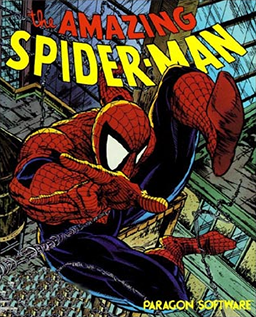
The Amazing Spider-Man is a platform game featuring the Marvel comic book character Spider-Man. The game was developed by Oxford Digital Enterprises and released in 1990 for Commodore 64 and Amiga, and later ported to IBM PC compatibles, Amstrad CPC, and Atari ST. The title was published by Paragon Software in North America and by Empire Software in Europe.

Shoot-'Em-Up Construction Kit is a game creation system for the Commodore 64, Amiga and Atari ST created by Sensible Software and published by Outlaw in 1987. It allows the user to make simple shoot 'em ups by drawing sprites and backgrounds and editing attack patterns. The advertising promoted the Kit with the phrase "By the programmers of Wizball and Parallax".

Xenon 2: Megablast is a 1989 shoot 'em up video game developed by The Bitmap Brothers and published by Image Works for the Amiga and Atari ST. It was later converted to the Master System, PC-98, X68000, Mega Drive, Commodore CDTV, Game Boy, Acorn Archimedes and Atari Jaguar platforms. The game is a sequel to Xenon and takes place a millennium after the previous title. The goal of the game is to destroy a series of bombs planted throughout history by the Xenites, the vengeful antagonists of the first game.
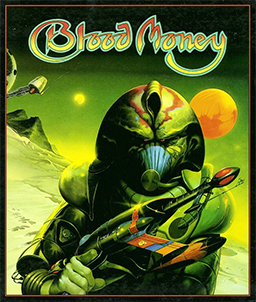
Blood Money is a 1989 side-scrolling shooter video game developed by DMA Design and published by Psygnosis. It was released for the Amiga, Atari ST, and MS-DOS in 1989, and for the Commodore 64 in 1990. The game is set in four different locations on a planet, where the player must fight off enemies and bosses.

Tynesoft Computer Software was a software developer and publisher in the 1980s and early 1990s.

Special Criminal Investigation, also known as S.C.I. for short or as Chase HQ II: Special Criminal Investigation in some home versions, is vehicular combat racing game published by Taito for arcades in 1989. It is the sequel to the 1988 game Chase H.Q.
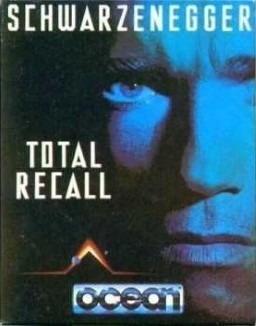
Total Recall is a 1990 platform game developed and published by Ocean Software that was released for the Commodore 64, Amiga, Amstrad CPC, ZX Spectrum, Atari ST, and Nintendo Entertainment System. Total Recall is based on the 1990 film of the same name.

Last Ninja 3 is an action-adventure video game developed and published by System 3 for the Commodore 64, Amiga, Atari ST in 1991 and the Amiga CD 32 in 1993. It is a sequel to the 1988 game Last Ninja 2.

Barbarian II: The Dungeon of Drax is a video game first published in 1988 for various home computers. It was released as Axe of Rage in North America. The game is the sequel to Barbarian: The Ultimate Warrior, which was published in 1987. In Barbarian II, the player controls a princess or barbarian character, exploring the game world to locate and defeat an evil wizard. The game's plot is an extension of its predecessor, although the gameplay is different. While the first game offers two players the opportunity for virtual head-to-head combat, the second is a single-player beat 'em up with fewer fighting moves. It uses a flip-screen style instead of scrolling.

The Real Ghostbusters is a 1987 shoot 'em up arcade game developed and published by Data East. It is loosely based on Ghostbusters. In Japan, Data East released it as a non-Ghostbusters arcade game under the title Meikyuu Hunter G. In 1989, Activision published The Real Ghostbusters for Amiga, Amstrad CPC, Atari ST, Commodore 64, and ZX Spectrum.

Casual Arts, formerly known as Flair Software, is a British video game developer and publisher of the 1990s that developed and published games for the Amiga, Amiga CD32, Atari ST, Commodore 64, DOS, PlayStation, Sega Saturn and SNES. It was set up by Colin Courtney in 1990 after his previous company, Tynesoft, went bankrupt. It retained Tynesoft's MicroValue brand and published Elvira: The Arcade Game which had originally been scheduled for publication by Tynesoft.
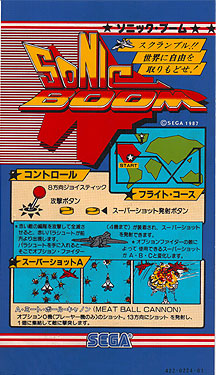
Sonic Boom is a vertical scrolling shooter developed by Sega and released in the arcades in 1987. Home computer versions for the Amiga, Atari ST, Amstrad CPC, Commodore 64 and ZX Spectrum were released in 1990 by Activision. The original arcade version was released on the Sega Astro City Mini console in 2021.

Ninja is a beat 'em up game developed by Sculptured Software and released by Mastertronic in 1986 for the Atari 8-bit computers, Commodore 64, and ZX Spectrum, then in 1987 for the Amstrad CPC, Amiga, Atari ST, and MS-DOS. An arcade version of the game was released in 1987 for Mastertronic's Arcadia Systems which is based on Amiga hardware. The Amiga, Atari ST, and Arcade versions were released as Ninja Mission. As a Ninja, the player attacks a fortress made of individual fixed screens which can be explored non-linearly.

P-47: The Phantom Fighter is a 1988 horizontally scrolling shooter arcade video game originally developed by NMK and published by Jaleco. Set during World War II, players control a Republic P-47 Thunderbolt fighter aircraft to face against the Nazis, who are occupying multiple countries around the world. Its gameplay involves destroying waves of enemies, picking up power-ups and new weapons, and destroying bosses. It ran on the Mega System 1 hardware.
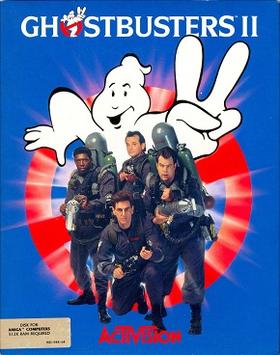
Ghostbusters II is a 1989 action game based on the film of the same name. It was published by Activision for various computer platforms. British studio Foursfield developed a version for Commodore 64, Amiga, Atari ST, Amstrad CPC and ZX Spectrum, which also got ported to the MSX by New Frontier. It features three levels based on scenes from the film. Dynamix developed a separate version for the DOS, also based on the film. The non-DOS versions were praised for the graphics and audio, but criticized for long loading times, disk swapping, and the final level. The DOS, Commodore 64 and Amiga versions were the only versions released in North America.

Judge Dredd is a 1991 platform shoot 'em up video game based on the character of the same name. It was developed by Random Access and published by Virgin Mastertronic. It was released in Europe in 1991, for the Amiga, Atari ST, Commodore 64, and ZX Spectrum. Critics found the gameplay repetitive.

Terry's Big Adventure is a game published by Shades Software in 1989 for use on the Atari ST, Commodore 64 and Commodore 128, and by Grandslam Interactive for Amiga.
